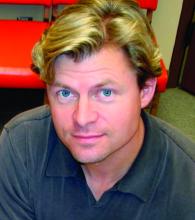Nearly every parent gets excited about their child’s first smile, steps, and words. Developmental and behavioral screening helps to better track young children’s progress in areas like communication, motor, cognitive, and social/emotional skills. Approximately one in four or five children are at risk for a developmental/behavioral delay, which might indicate an emerging developmental disability or mental health disorder.
Regular screenings raise awareness of children’s development, which makes it easier for parents to expect and celebrate milestones. They encourage parents and doctors to avoid the common pitfall of taking a “wait and see” approach. Regular screenings might even help doctors more easily diagnose co-occurring conditions like autism, sleep disorders, iron deficiencies, hearing impairment, metabolic disorders, genetic disorders, in utero drug/alcohol exposure, or child maltreatment.
High-quality interventions for children aged 0-5 years can decrease rates of special education, substance abuse, criminality/incarceration, suicidal attempts, and unemployment or welfare dependency. The trick is to swiftly identify and refer at-risk and delayed children to the most effective resources in a family-centered manner.
Our new study, which has been published online in Developmental Medicine and Child Neurology, investigated early childhood screening practices across the United States and Scandinavia (Denmark, Norway, and Sweden), which lie relatively far apart on the spectrum of preventive care models (2018 Sep 23. doi: 10.1111/dmcn.14044).
Just like many other developed areas of the world, the United States and Scandinavia are increasingly using two accurate, parent-reported screening tools – the Ages & Stages Questionnaire (ASQ) and ASQ:Social-Emotional (ASQ:SE) – to measure developmental and behavioral skills in children aged 0-5 years. We found that routine and periodic ASQ and/or ASQ:SE screening is low cost, feasible, and increases early detection and referral rates, plus they connect at-risk children to early intervention programs at significantly younger ages.
Surprisingly, the United States and Scandinavia tend to use these same two screening questionnaires quite differently. U.S. pediatricians and family physicians commonly use the ASQ and/or ASQ:SE in clinic settings to swiftly identify developmental/behavioral red flags in children from general and at-risk populations (See video at end of article). Scandinavian studies more commonly report the use of the ASQ and ASQ:SE to track developmental/behavioral differences in children in an intervention/exposure group and how they compare with children in a control group over time. In other words, the United States uses these screens clinically, and Scandinavia mostly uses them for research purposes.
In Scandinavia, home visit nurses and general practitioners commonly administer more narrowly focused, “hands-on” screens during infancy. Different municipalities use different screens. Language-focused screening typically is not performed until ages 2.5-3 years in preschools or child health centers. That’s probably too late. Scandinavian countries, which boast bountiful and equitable early childhood resources, are not routinely using parent-centered screening tools that measure all of a child’s developmental domains, including social/emotional skills. One reason is probably that Danish and Swedish ASQ and ASQ:SE norming (standardization) and validation (reliability and accuracy) studies are lacking and because Norwegian norms are out-of-date. Therefore, they are primarily used just for research. Every decade, the “good” screening questionnaires have to be scientifically tweaked and improved as the characteristics of populations (like ethnicity, socioeconomic status, or percentage of new immigrants) and cultural norms (like rotary versus cell phones) change over time.



